Breadcrumb
Cooperative D2D communication in downlink cellular networks with energy harvesting capability
Device-to-Device (D2D) communications have been highlighted as one of the promising solutions to enhance spectrum utilization of LTE-Advanced networks. In this paper, we consider a D2D transmitter cooperating with a cellular network by acting as a relay to serve one of the cellular users. We consider the case in which the D2D transmitter is equipped with an energy harvesting capability. We investigate the trade-off between the amount of energy used for relaying and the energy used for decoding the cellular user data at the relaying node. We formulate an optimization problem to maximize the
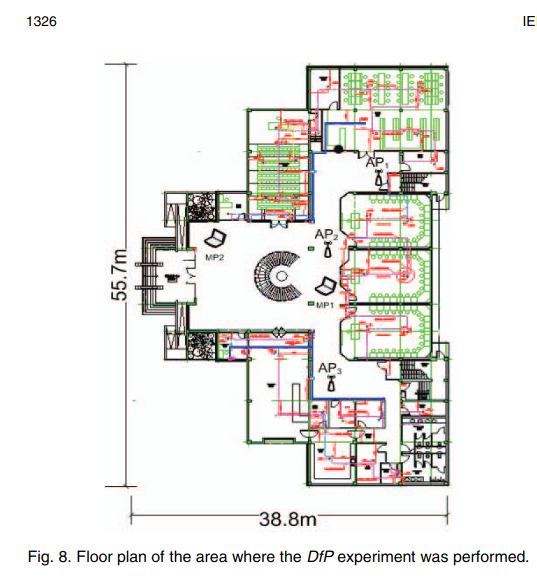
Nuzzer: A large-scale device-free passive localization system for wireless environments
The widespread usage of WLANs and mobile devices has fostered the interest in localization systems for wireless environments. The majority of research in the context of wireless-based localization systems has focused on device-based active localization, in which devices are attached to tracked entities. Recently, device-free passive localization (DfP) has been proposed where the tracked entity is neither required to carry devices nor to participate actively in the localization process. Previous studies have focused on small areas and/or controlled environments. In this paper, we present the
CellSense: An accurate energy-efficient GSM positioning system
Context-aware applications have been gaining huge interest in the last few years. With cell phones becoming ubiquitous computing devices, cell phone localization has become an important research problem. In this paper, we present CellSense, which is a probabilistic received signal strength indicator (RSSI)-based fingerprinting location determination system for Global System for Mobile Communications (GSM) phones. We discuss the challenges of implementing a probabilistic fingerprinting localization technique in GSM networks and present the details of the CellSense system and how it addresses
Resource Allocation and Interference Management Techniques for OFDM-Based VLC Atto-Cells
In this paper, a resource partitioning scheme combined with a new multi-carrier optical modulation technique for indoor visible light communication (VLC) system is proposed. In VLC systems, the coverage area is divided into multiple atto-cells. In each atto-cell, multiple LED arrays are used as access points (APs) serving the assigned users. The coverage area of APs might be overlapped to avoid service discontinuity for mobile users. The overlapped coverage zones result in co-channel interference (CCI). We develop a shared frequency reuse (SFR) technique combined with two resource allocation
Comparative Study of Vehicular Proactive Caching between Cellular and VLC Networks
The rapid growth of vehicle demand, such as information sharing, entertainment, and multimedia contents, overwhelms the back-haul network. Due to this nature of the network that suffers from high link disconnections and limited resources, it is challenging to develop a new strategy to satisfy users' requirements. Proactive caching is a useful technique to mitigate the load on core networks, and determining the best caching placement of data time to enhance the network is a significant issue. However, radiofrequency is spreading and supporting multiple channels communication, and has a licensed
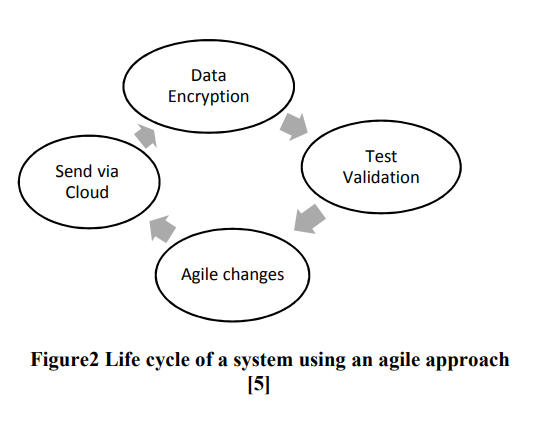
IoT Agile Framework Enhancement
Internet of Things (IoT) is considered as a trend nowadays. Devices connected to the internet interact with surrounding; this poses strong challenges in handling big data with a certain level of security. In this paper IoT devices will be divided in to two categories high vulnerability devices and low vulnerability devices. The classification depends on the ease of attacks. In order to ensure the security of IoT devices, an agile approach is used to secure high vulnerability devices as first step and then low vulnerability devices by applying encryption algorithms. © 2018 IEEE.

Maximum Secondary Stable Throughput of a Cooperative Secondary Transmitter-Receiver Pair: Protocol Design and Stability Analysis
In this paper, we investigate the impact of cooperation between a secondary transmitter-receiver pair and a primary transmitter on the maximum stable throughput of the primary-secondary network. Each transmitter, either primary or secondary, has a buffer for storing its own traffic. In addition to its own buffer, the secondary transmitter has a buffer for storing a fraction of the undelivered primary packets due to channel impairments. Moreover, the secondary destination has a relaying queue (buffer) for storing a fraction of the undelivered primary packets. In our proposed cooperative system
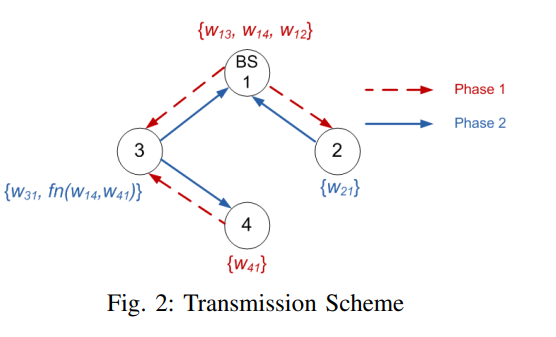
Degrees of freedom region of device-relaying cellular network
In this paper, we characterize the degrees of freedom (DoF) region of a MIMO device-relaying cellular network (DRCN) with three users and one base station (BS), where each user exchanges unicast messages with the BS. We assume that one of the users has no direct link to the BS, and hence, device-relaying is utilized to exchange data between this user and the BS, i.e., data is relayed via another user which has a direct link to the BS and a device to device (D2D) link to this user. We assume that each node operates in perfect full-duplex mode. Cut-set and genie-aided bounds are utilized to
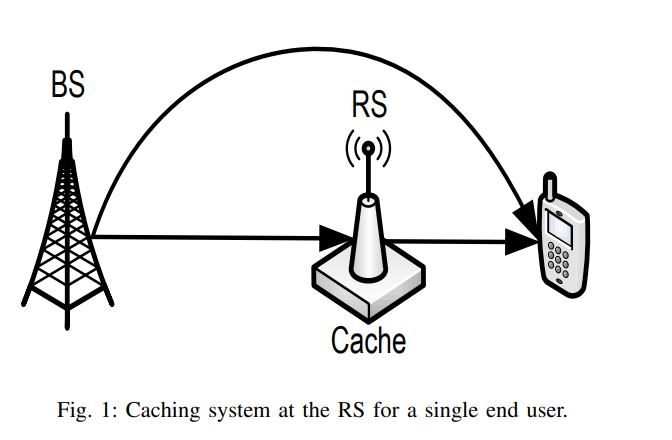
On Optimal Dynamic Caching in Relay Networks
We investigate dynamic content caching in relay networks where an intermediate relay station (RS) can adaptively cache data content based on their varying popularity. With the objective of minimizing the time average cost of content delivery, we formulate and study the problem of optimal RS cache allocation when the popularities of data content are unknown apriori to the network. While optimal dynamic cache control suffers the curse of dimensionality, we develop a fundamental lower bound on the achievable cost by any caching policy. Inspired by the structure of such lower bound, we develop a
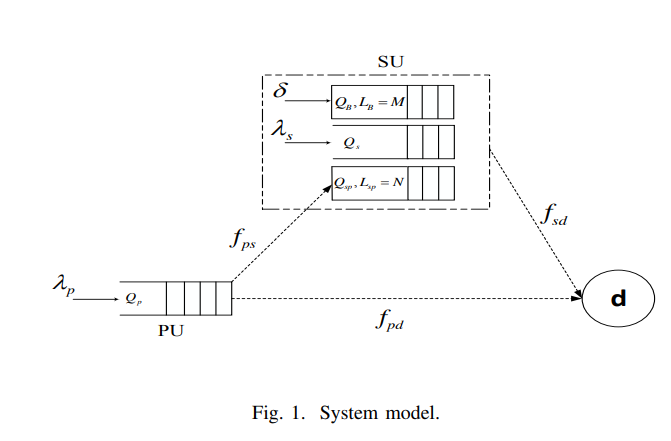
On the role of finite queues in cooperative cognitive radio networks with energy harvesting
This paper studies the problem of cooperative communications in cognitive radio networks where the secondary user is equipped with finite length relaying queue as well as finite length battery queue. The major hurdle towards fully characterizing the stable throughput region stems from the sheer complexity associated with solving the two-dimensional Markov Chain (MC) model for both finite queues. Motivated by this, we relax the problem and focus on two energy constrained systems, namely, finite battery queue with infinite relay queue and finite relay queue with infinite battery queue. We
Pagination
- Previous page ‹‹
- Page 20
- Next page ››
